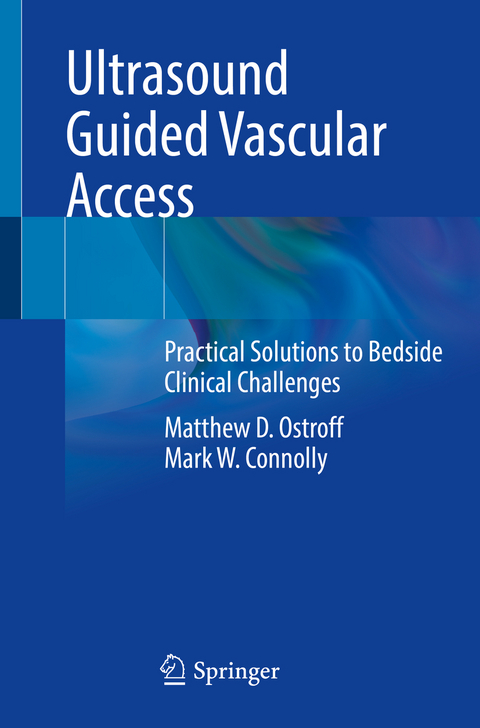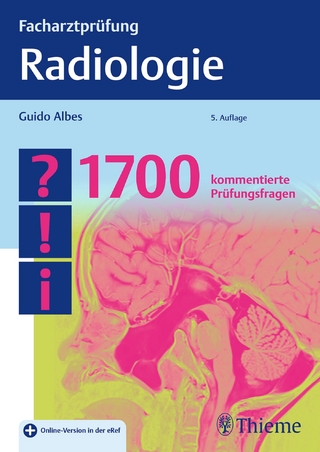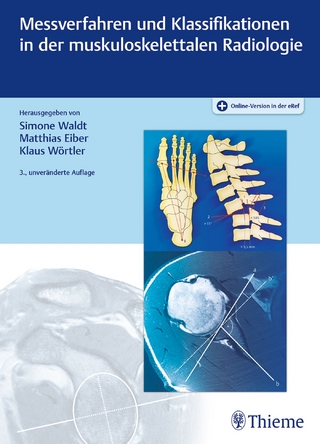
Ultrasound Guided Vascular Access
Springer International Publishing (Verlag)
978-3-031-18613-4 (ISBN)
Chapters present unique patient cases, incorporating the latest technology and techniques for safely and methodically meeting vascular access challenges, detailed discussions on therapeutic interventions, and trouble shooting. The book is structured so that each chapter builds on the last, offering peripheral, central, and tunneled catheter solutions through a standardized approach. Finally, each part features a COVID-19 case study including vascular access performed in the prone position.
This is an ideal guide for trainees, students, clinicians, and healthcare professionals performing ultrasound guided vascular access on patients.
Matthew Ostroff, MSN, APN
Vascular Access Coordinator Lead Advanced Practice Nurse St Joseph's University Medical Center
Mark William Connolly, MD Chairman, Department of Surgery Chief, Division of Cardiothoracic Surgery St. Joseph's University Medical Center
Part 1: Ultrasound Guided Peripheral Intravenous (PIV) Access.- Assessment of Peripheral vasculature in a bariatric patient.- Infusion and phlebotomy in outpatient paediatrics: A genetic testing case.- Rapid response and the brachial vein.- Emergent Rapid Massive Transfusion and the basilic vein.- Small bore long peripheral catheter and therapeutic phlebotomy.- Emergency CT scan required: wire exchange of the PIV.- Palliative care and the femoral midline catheter.- Bridging a central catheter exchange with vasopressors through a PIV.- Pompe disease and the cephalic vein in the forearm.- Geriatric patient with limited vasculature: a trimmed neonatal double lumen catheter.- Radial arterial catheter placement in the Prone Covid-19 patient.- Needle phobia in a morbidly obese patient: Nitrous Oxide and Intranasal Versed.- Vessel preservation in the cystic fibrosis patient with peripheral clinically indicated site rotation.- Part 2: Ultrasound Guided Peripherally Inserted Central Catheters (PICC).- Pemphigus vulgaris and PICC securement.- Subcutaneous Tunnelling for upper arm PICC placement.- Dialysis patient and the brachial PICC line.- Neonate with Dysplasia of the hip (DDH) for upper extremity PICC placement.- Geriatric requiring PICC with poor skin turgor and implanted cardiac device.- 2-year-old with Cystic fibrosis arterial placement complication and recognition.- PICC insertion in the prone COVID-19 patient.- PICC insertion and broken guide wire complication.- Part 3: Ultrasound Guided Thoracic Central Venous Catheters (CVC).- Assessment of the Central thoracic vasculature in a cachectic patient.- Apheresis catheter placement in the oncologic patient with existing porta Cath.- The supraclavicular approach to the subclavian vein.- Central Access on the Rapid Response Team for Covid-19 patients: The Axillary Vein.- Central and Dialysis CVC placement in the COVID-19 patient.- Patient with implantable cardiac device requiring Dialysis and Central Venous Access: Jugular/Femoral.- Replacing CVC in region of existing CVC.- Removal of Right Jugular CVC dislodges Left Subclavian CVC: Techniques and Intervention.- The axillary and brachiocephalic approach in the neonate.- Cardiac surgery and the sutured CVC.- Part 4: Ultrasound Guided Femoral Central Venous Catheters.- Assessment of the Femoral vasculature in a contracted dialysis patient.- The dialysis patient with central occlusion and the mid-thigh femoral CVC.- Severe sepsis requiring bilateral mid-thigh femoral CVC access.- Emergent hospital transfer with ventricular tumor and the femoral CVC.- COVID-19: Central access in the prone position.- Part 5: Bedside Tunnelled Central Venous Catheters (CVC).- Assessment of exit site locations: Tunnelling the Axillary vein to the arm in the contracted patient.- Tunnelling in the emergency department: Long term inotrope therapy.- Tunnelling from the jugular vein to the outer arm: Avoiding the tracheostomy and chest wound.- Tunnelling to the scapular region: Theadult altered mental status patient.- Osteomyelitis in the patient with attention deficit disorder with autism: Scapular Tunnelling.- Tunnelling from the femoral vein to the abdomen: The ambulatory dialysis patient.- Tunnelling to outer thigh: Central occlusion with an above the knee amputation and femoral permacath.- The bariatric obstetric emergency.- Subcutaneous needle tunnelling in the neonatal patient population.- Long term venous access in the COVID-19 patient.- Tunnelling to the calf: Non-surgical palliative femoral approach for Endocarditis and altered mental status.
| Erscheinungsdatum | 02.12.2022 |
|---|---|
| Zusatzinfo | XVI, 334 p. 61 illus., 1 illus. in color. With online files/update. |
| Verlagsort | Cham |
| Sprache | englisch |
| Maße | 155 x 235 mm |
| Gewicht | 661 g |
| Themenwelt | Medizinische Fachgebiete ► Radiologie / Bildgebende Verfahren ► Radiologie |
| Schlagworte | beside care • cases • Interventional Radiology • patient safety • Ultrasound • vascular access |
| ISBN-10 | 3-031-18613-3 / 3031186133 |
| ISBN-13 | 978-3-031-18613-4 / 9783031186134 |
| Zustand | Neuware |
| Haben Sie eine Frage zum Produkt? |
aus dem Bereich


